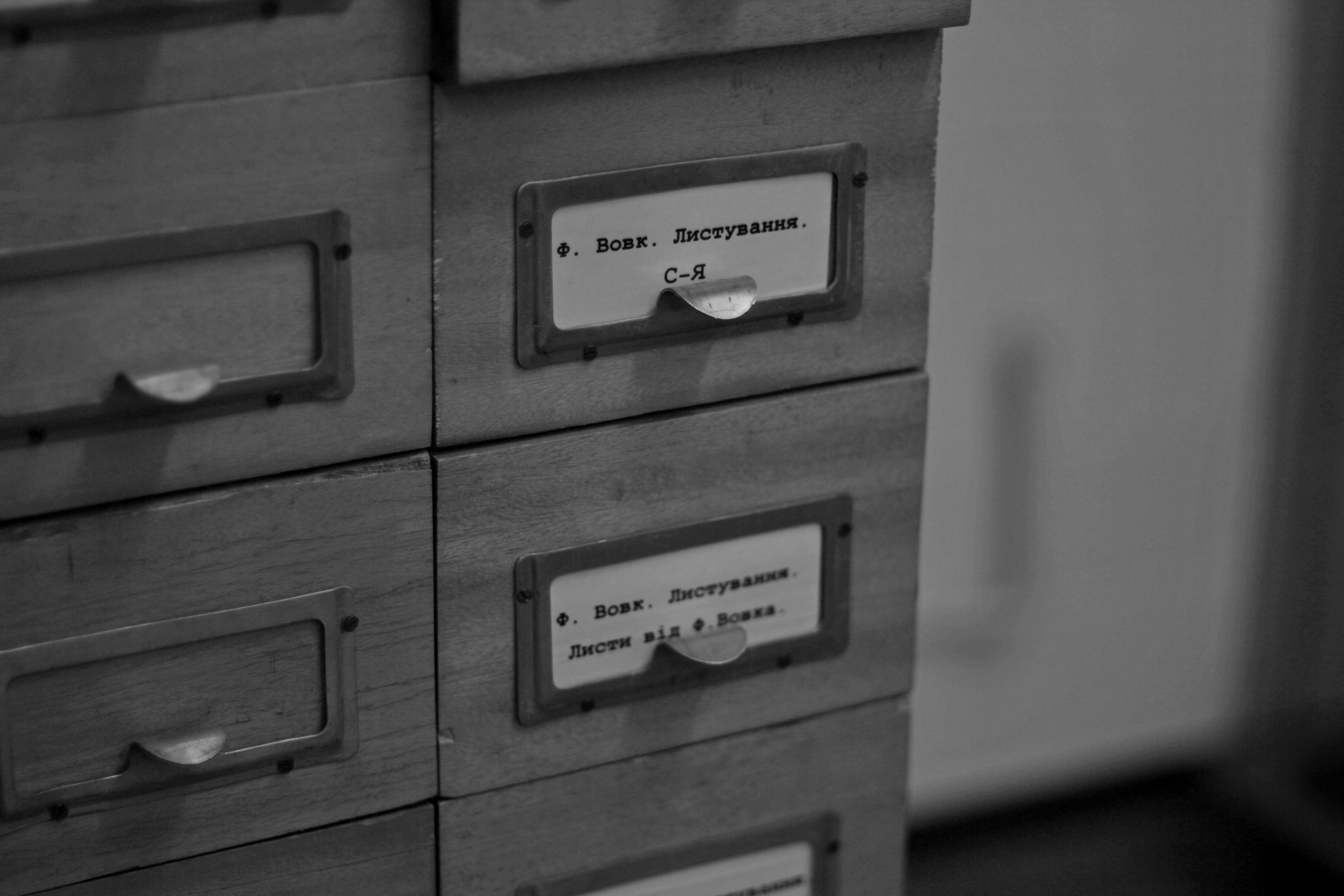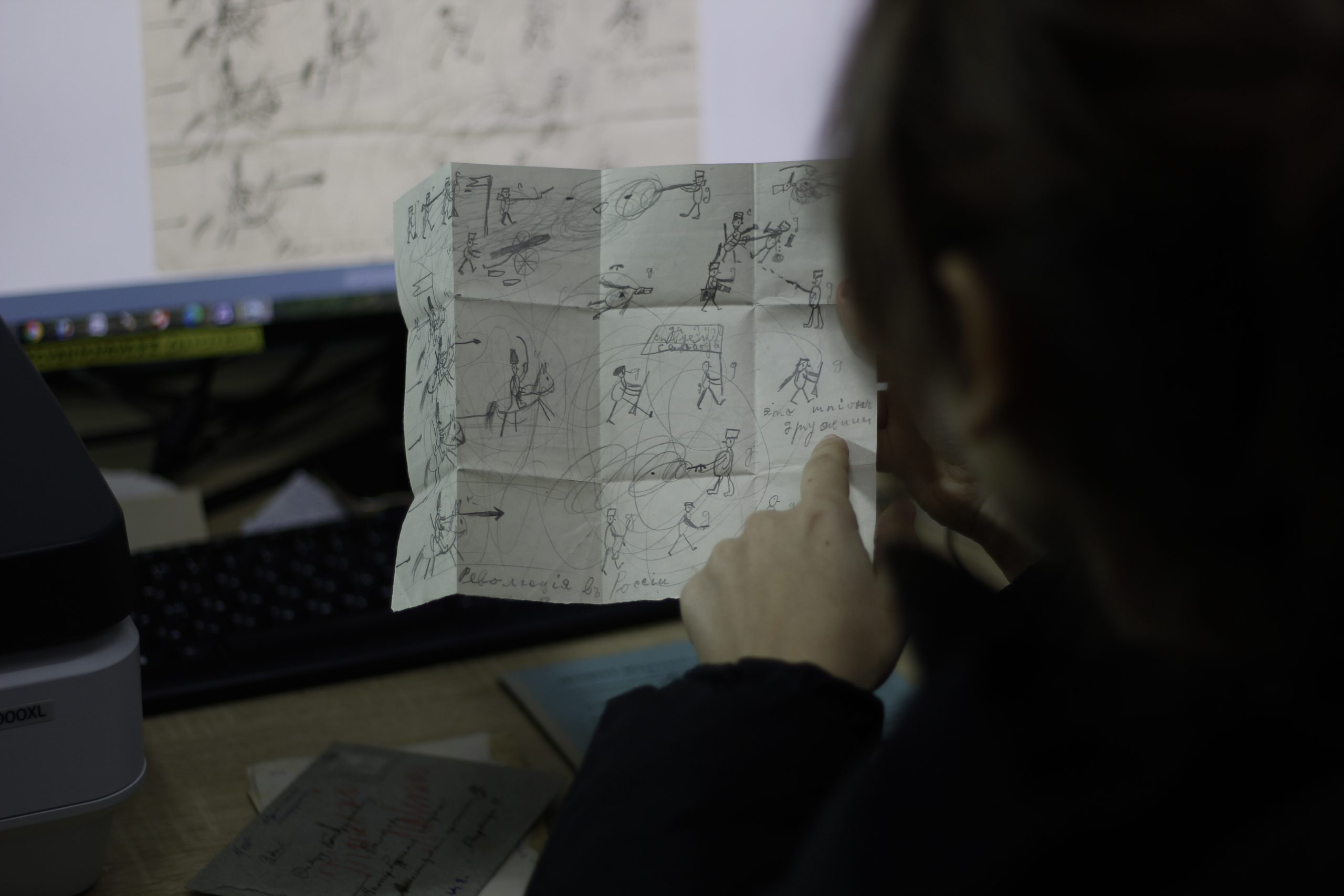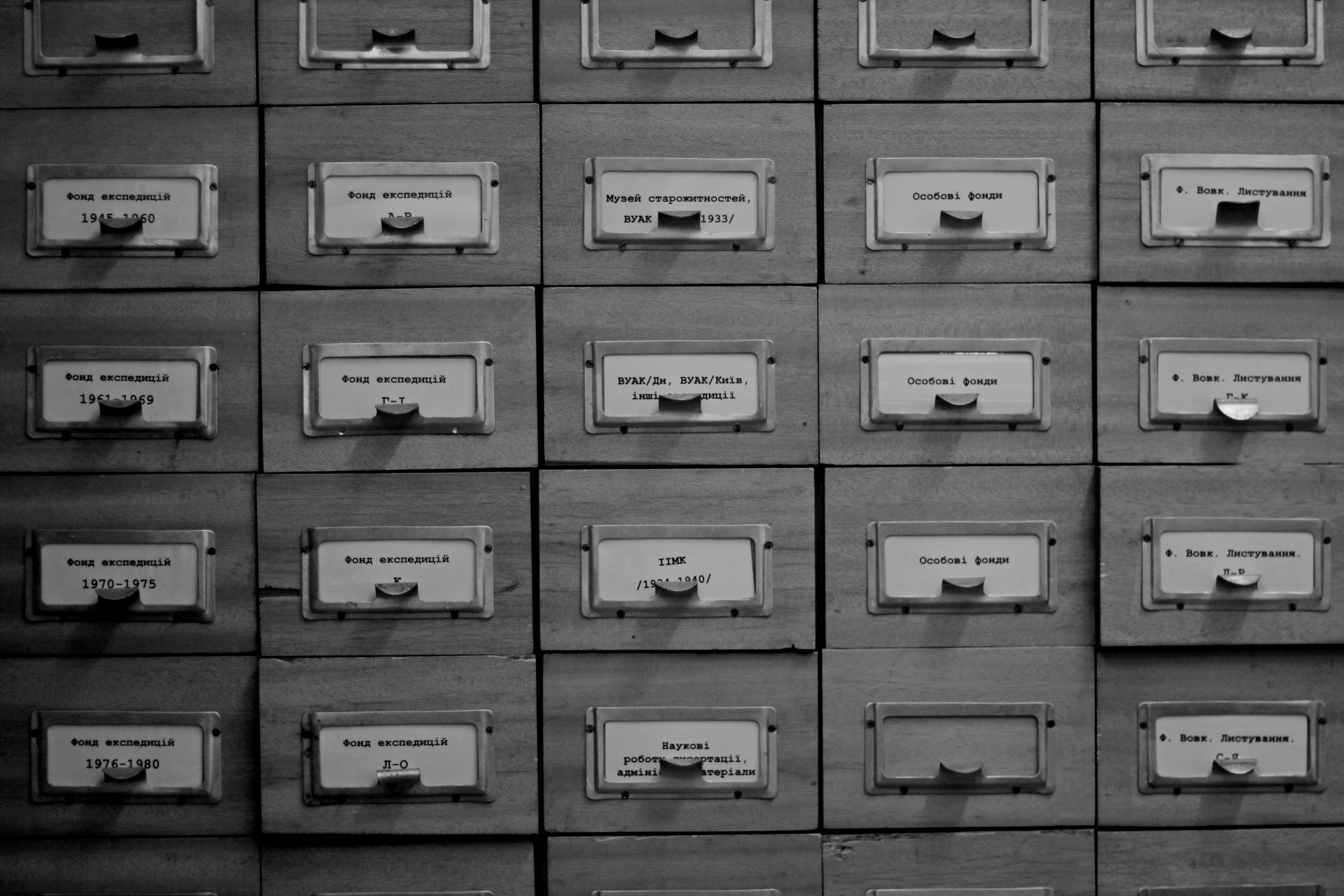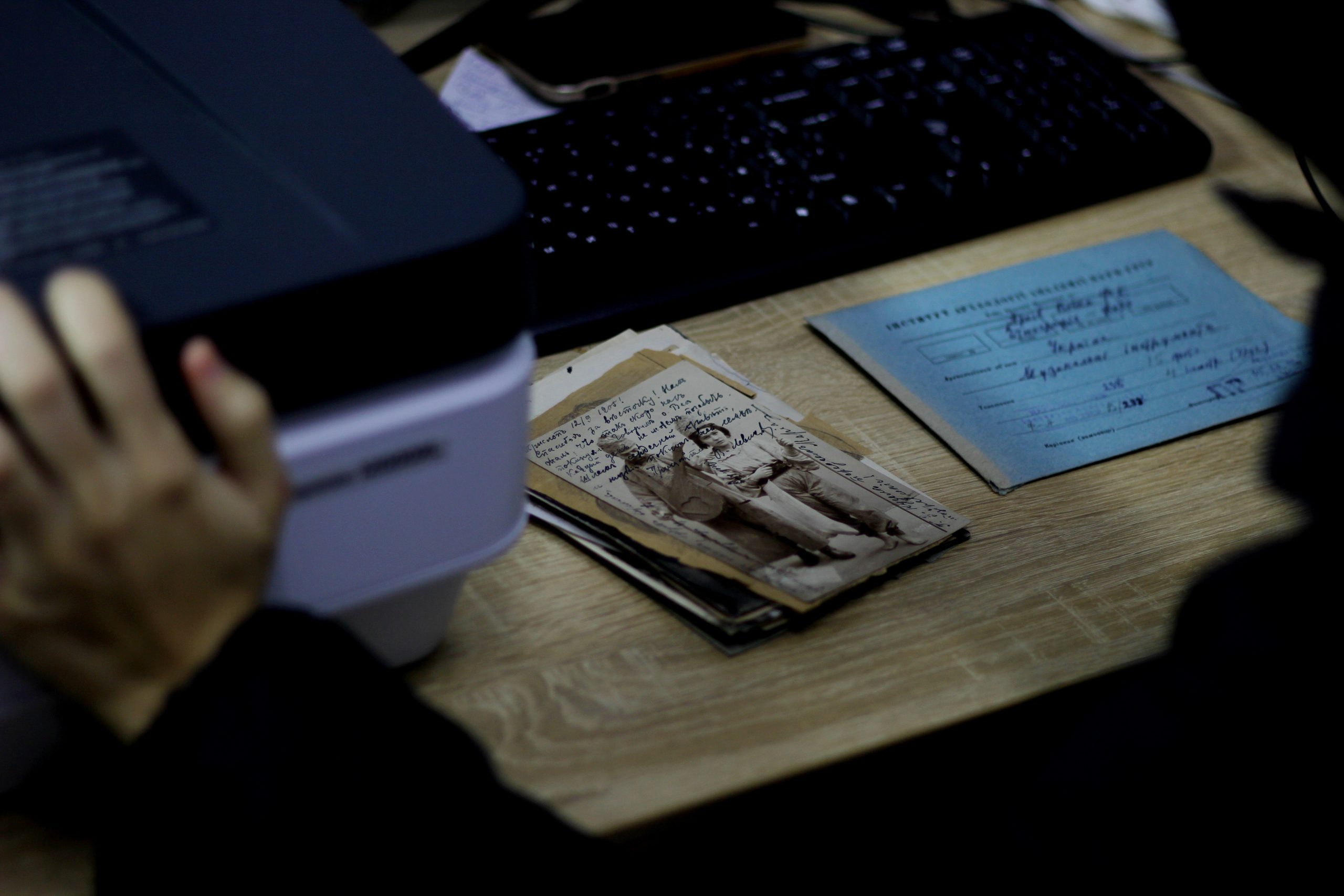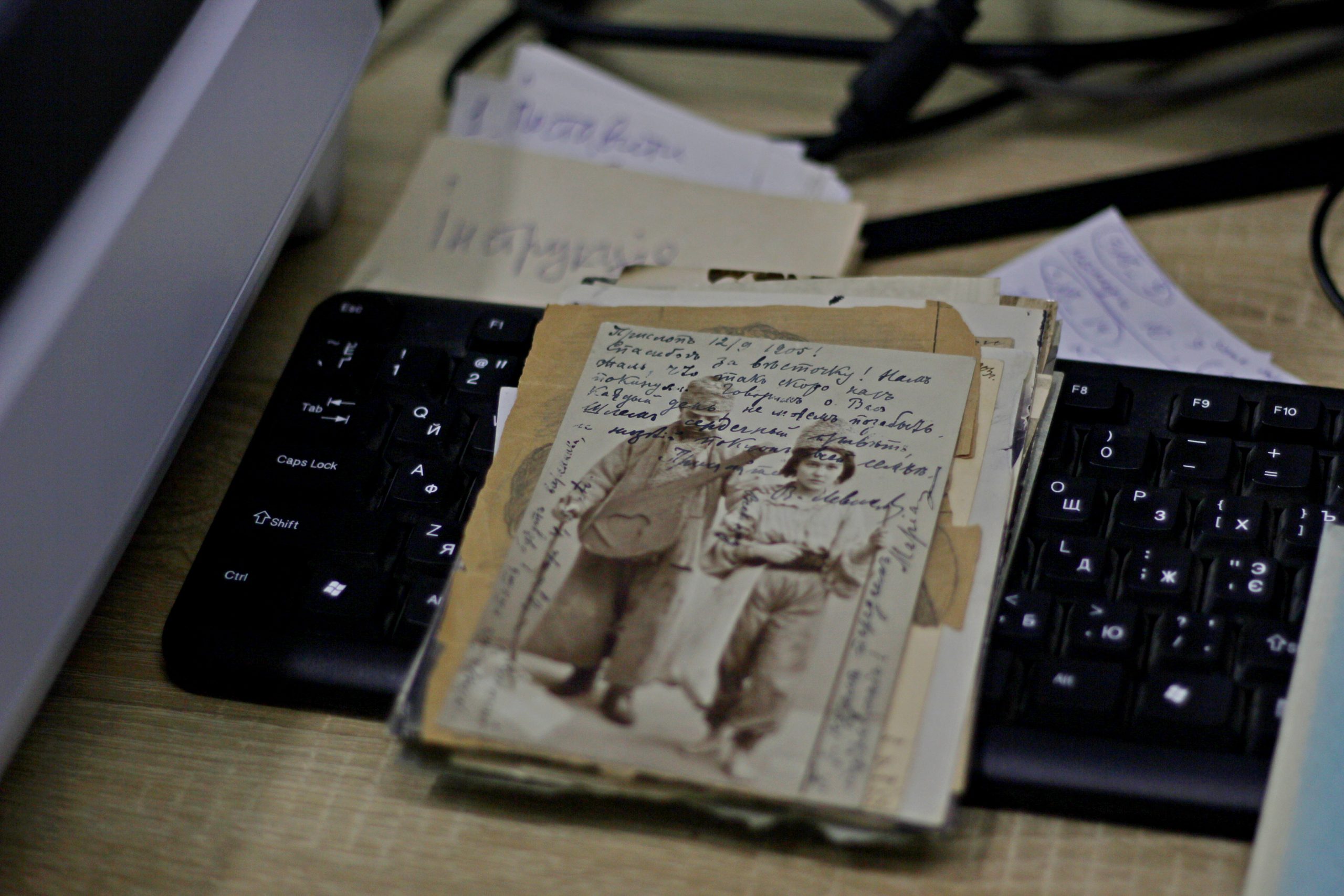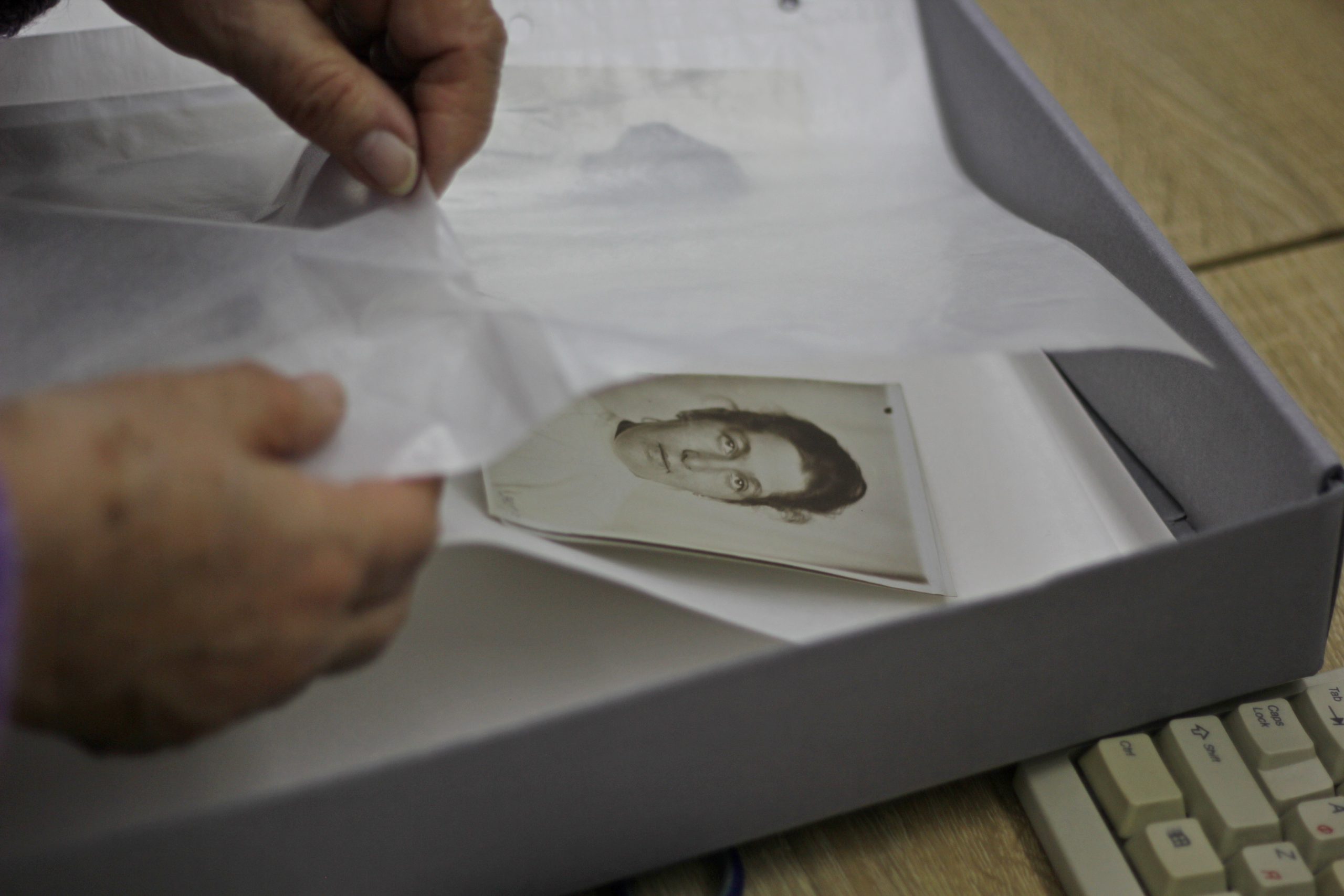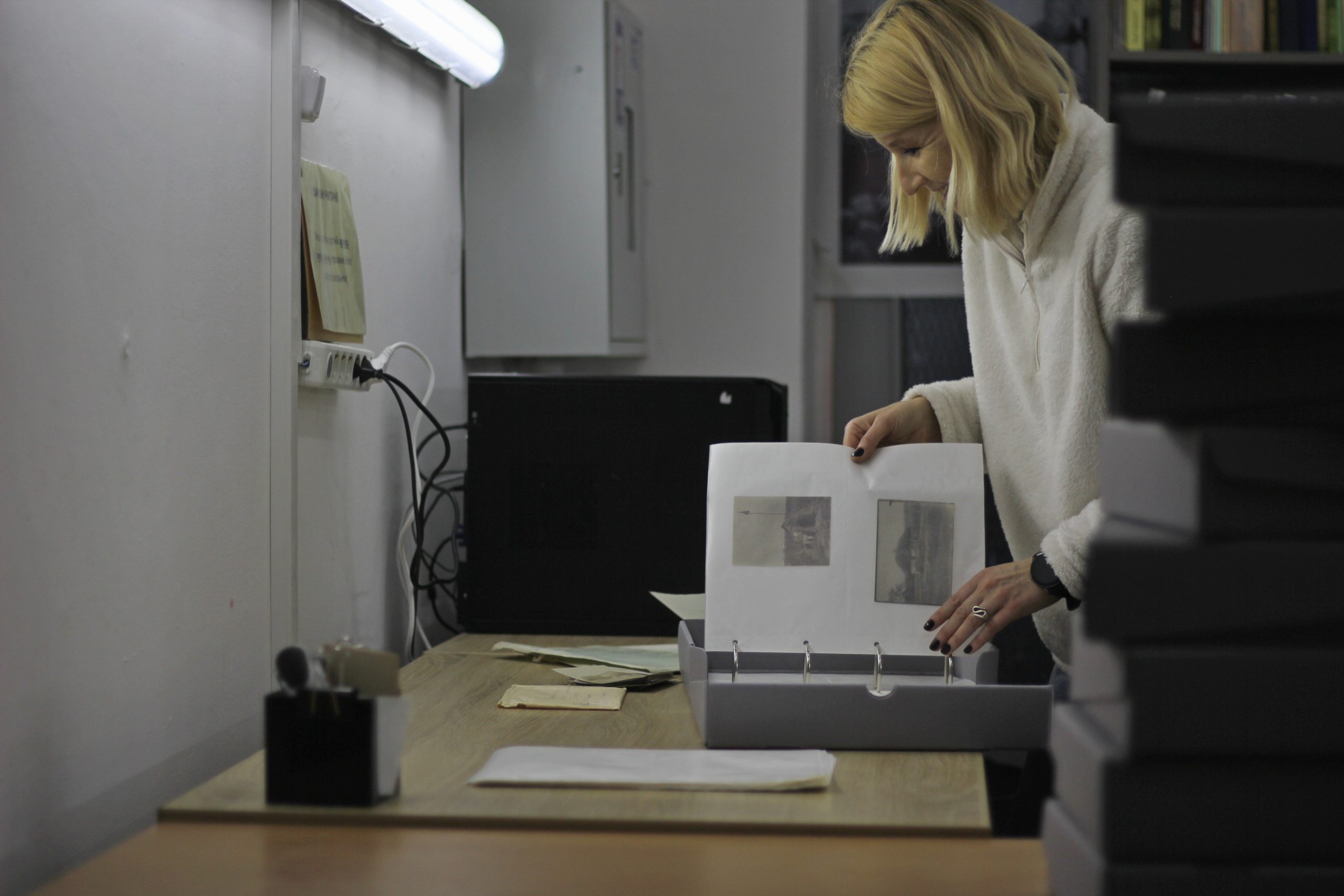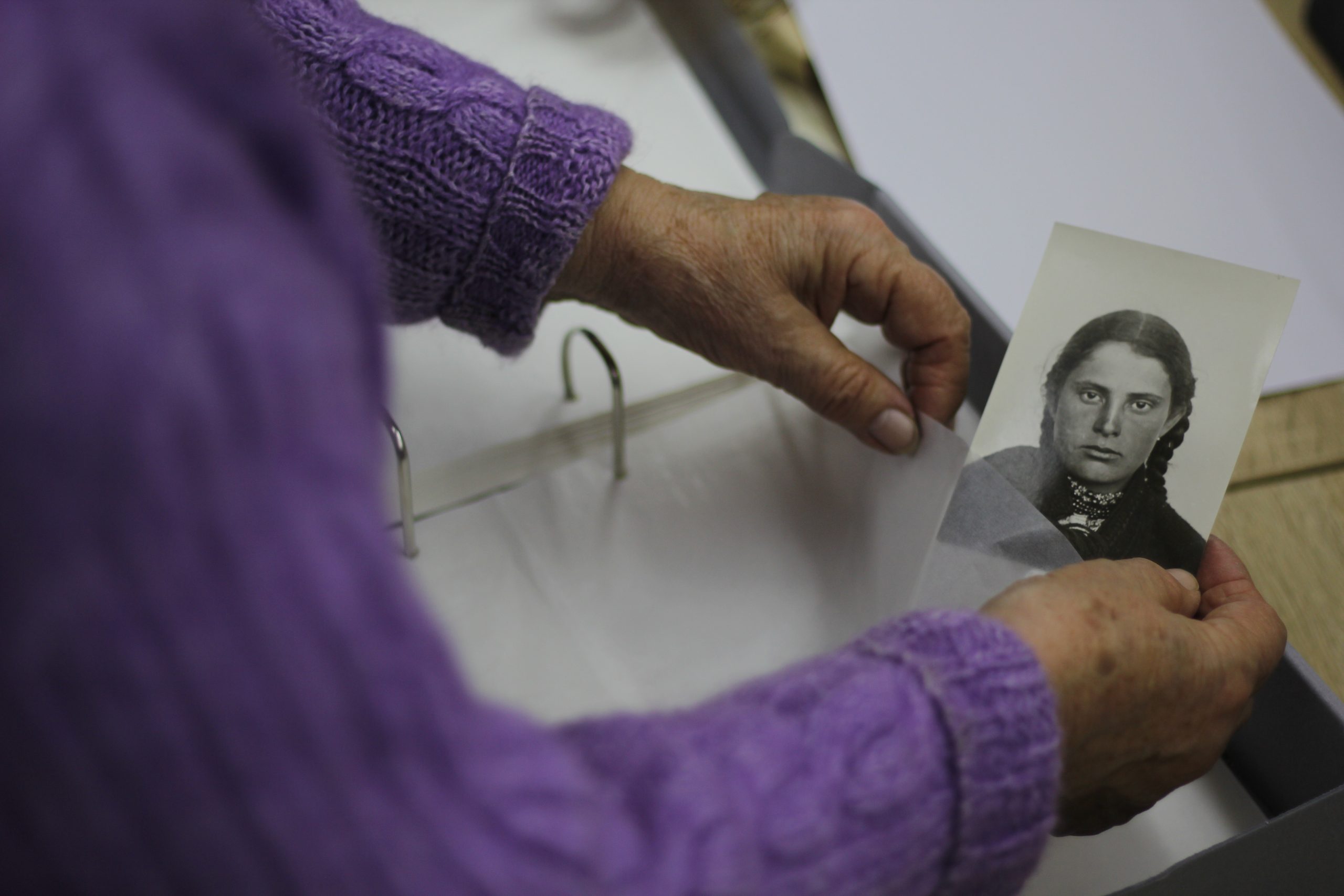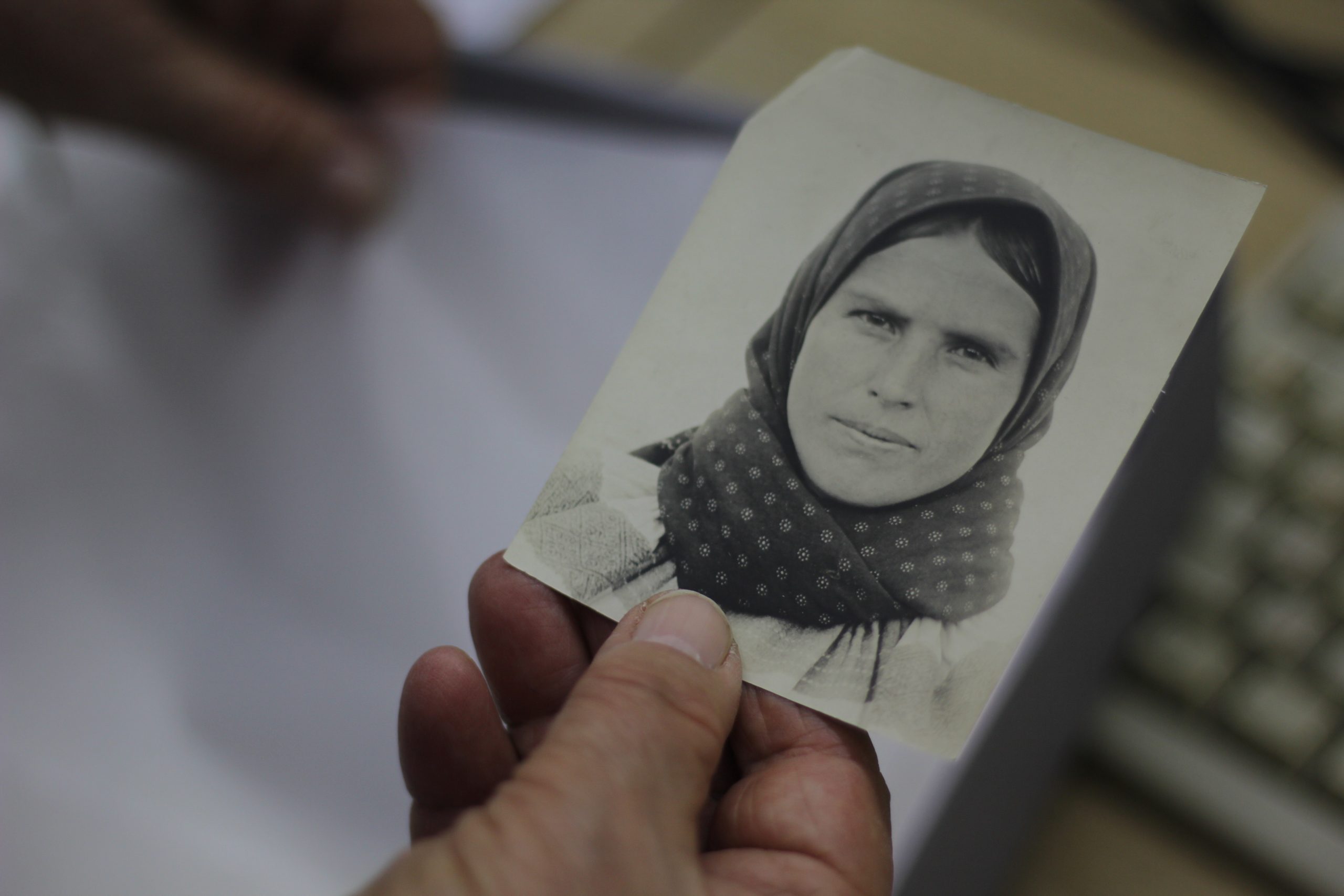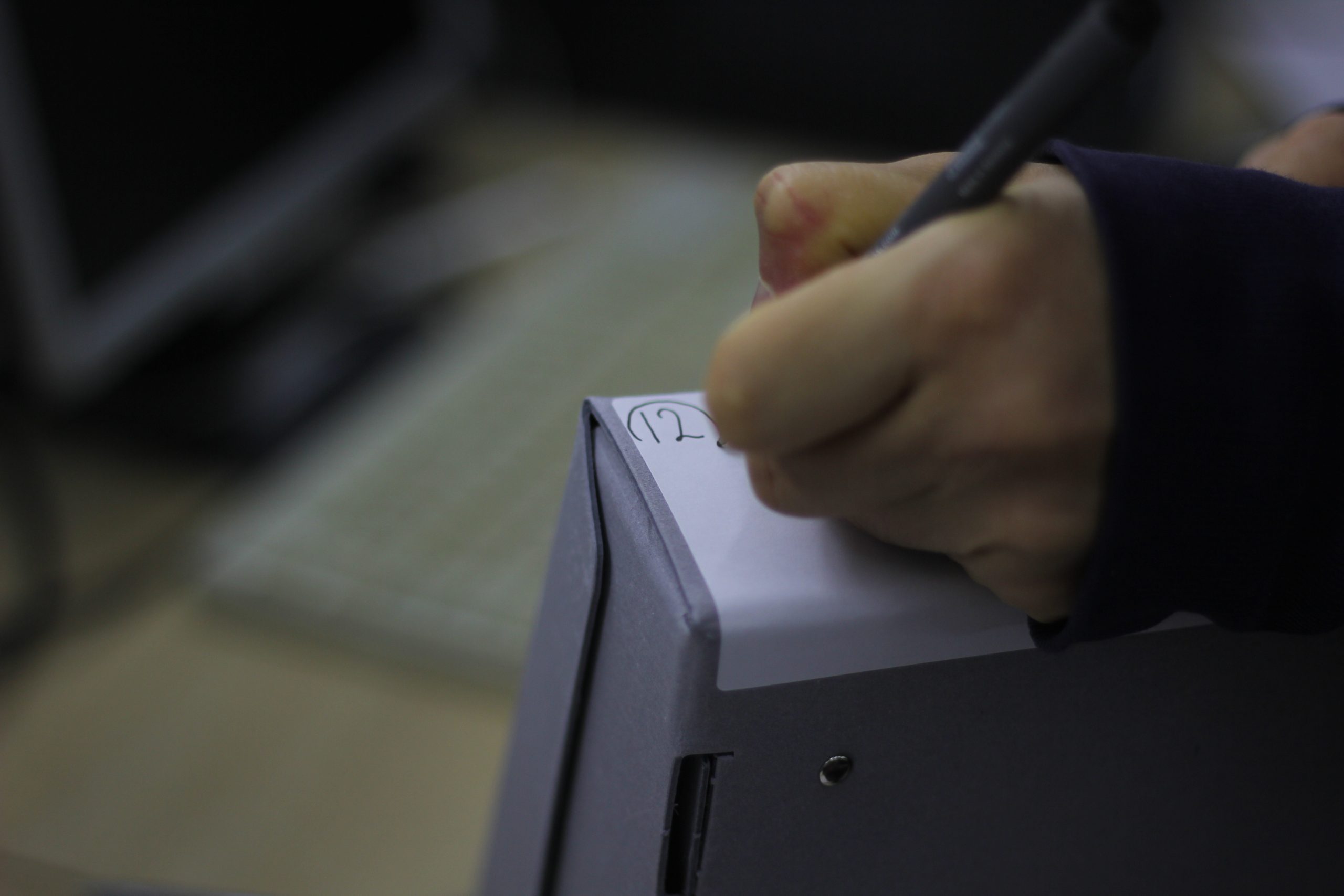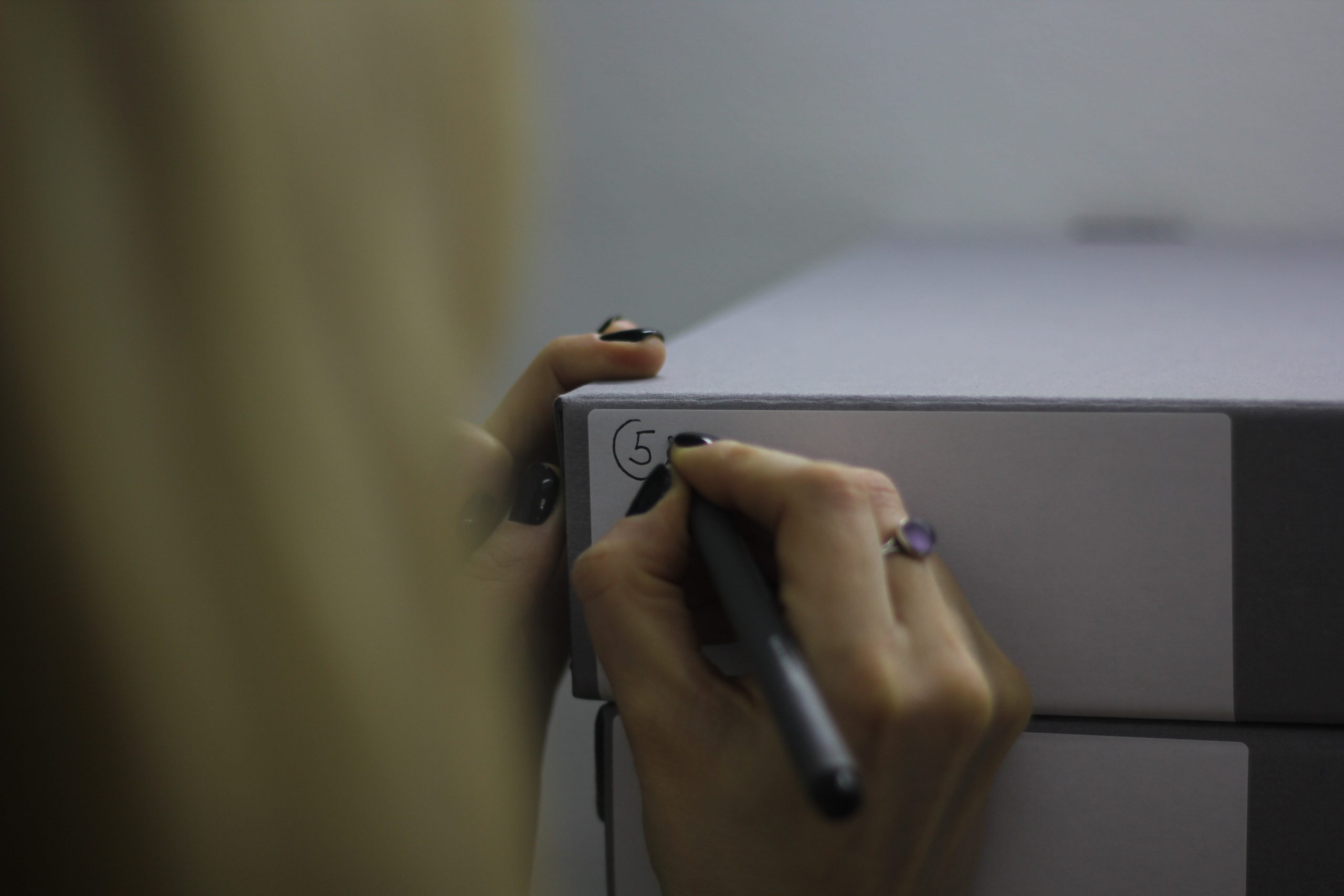About the work on the Project "Digital Memory Storage. Khvedir Vovk's Archive (1847-1918)"
BACKGROUND
The Scientific Archive of the Institute of Archeology of the National Academy of Sciences of Ukraine (hereinafter referred to as the Archive), located in Kyiv, holds more than 70 fonds. In addition to reports on excavations and explorations in Ukraine, these are also personal archives of scientists - prominent archaeologists, intellectuals, and cultural figures of the nineteenth and twentieth centuries. During the 2020-2021 covid lockdown, the Scientific Archive began implementing the “Digital Memory Storage” initiative, a project to digitize archival collections and make them freely available. At the time, under quarantine restrictions, when physical access to documents was limited, this task seemed to facilitate the work of scholars by making documents more accessible. While researchers were unable to physically come to work, we posted archival materials on the website, and the Archive was undergoing renovations to increase the amount of storage space for documents.
The repairs were successfully completed, and on February 24, 2022, a full-scale attack by russian troops on Ukraine, including Kyiv, began. This made the preservation of archival documents in the form of digital copies our priority and a task of strategic importance. Since then, the Archive has increased the number of scanning equipment, and all the efforts of the staff are directed to scanning. Whenever possible, we also involve student and volunteer resources.
PROJECT IMPLEMENTATION
In July of this year, with the support of Austrian colleagues from the Volkskundemuseum Wien (Vienna Museum of Natural History), Photoinstitut Bonartes (Vienna), and with the financial support of the ERSTE Stiftung (Vienna), the Scientific Archive launched the project "Digital Memory Storage. The Archive of Khvedir Vovk (1847-1918)" - the project aimed at digitizing the personal collection of the famous Ukrainian anthropologist, ethnographer and archaeologist. The scholarship program from our Austrian colleagues provided financial support to the Archive for a period of six months (July-December 2023), the purchase of an Epson Expression 12000XL scanner and packaging materials for the storage-sensitive photographs and photographic negatives on glass from the collection. During this period, we managed to implement the project to a significant extent. Most of the paper collection of Khvedir Vovk has been digitized, photographs and photo negatives on glass have been transferred to new archival envelopes and boxes made of acid-free materials. A website was created to showcase the fond's photo collection.
Daryna Romanenko, Halyna Stanytsyna, Tamara Kutsayeva and Oleksandra Buzko were involved in scanning the documents. The volume of documents in the collection turned out to be very large, and the team made more than 32,000 scanned copies using Epson Expression 12000XL scanner (photographs, negatives on glass and some drawings) and two CZUR document scanners (text documents). For the purchase of the latter, we are grateful to archaeologist Oleksii Komar, who is currently in the army, and philanthropist Taras Khmelovskyi.
In parallel with the digitization of the documents, work continued on the website. In the midst of the project, our programmer and archaeologist Volodymyr Mysak was drafted into the army, so whenever he could, he consulted us by phone. We are also grateful to programmer Ihor Mysak for his advice and technical assistance in setting up the hosting. We are grateful to Oleksandr Petrashenko, system administrator of the Institute of Archeology, for his consultations and valuable advice. As a result of this difficult cooperation, this website was created and hosted on a web server by AWS (Amazon Web Services). The website is built on the basis of the open source content management system WordPress. The website consists of client (frontend) and administrative (backend) parts. The frontend was created using the professional WordPress theme "Bold Photography Pro" by CATCH THEMES, including a thematically selected functional part. The layout is adaptive for all types of devices (PCs, tablets, mobile phones). Moderators of different access levels have the ability to create and edit the site's content. About 30 plugins and widgets are used, including various types of galleries and sliders, bilingualism (Ukrainian and English versions), category and case structure, and security plugins. The site has over 5 GB of photo materials, which are grouped into 14 categories and more than a hundred key objects. Each of the categories is "pulled up" by the corresponding scanned copies of individual cases displayed in two galleries (the "3D FlipBook" slider in the form of a book and the "Modula" gallery with a sequential series of photos).
The following categories are currently available on the site:
About Khvedir Vovk:
- Biographic documents;
- Portraits and other photographs.
Scholarly materials:
- Archaeology;
- Ethnography;
- Anthropology.
Epistolary materials:
- Letters from Mykhajlo Hrushevsky;
- Letters from Mykola Bilyashivsky;
- Letters from the Mortillet family.
Negatives on glass collection:
- Traveling in Europe;
- Iconographic exhibition of the XI Archaeological Congress;
- Archeology. Mizyn archaeological site.
As of the end of December 2023, the vast majority of photographs and glass negatives stored in the collection, as well as some text documents (biographical documents of Khv. Vovk and some correspondence) have been published.
 This work is licensed under a Attribution-NonCommercial-NoDerivatives 4.0 International License (CC BY-NC-ND 4.0)
This work is licensed under a Attribution-NonCommercial-NoDerivatives 4.0 International License (CC BY-NC-ND 4.0)
SPECIAL THANKS
The Scientific Archive expresses its sincere gratitude to everyone involved in the project. First, to the historian Martin Rohde, who initiated the search for financial support and stayed in touch with us in solving many current issues. We are grateful to the historian Fabian Baumann for introducing us and always taking care of our affairs in the war. We are grateful for the assistance of the Academic Council of the Institute of Archeology, its director Viktor Chabai, deputy director for research Alla Buiskykh, and academic secretaries Serhiy Telizhenko and Olha Manihda. We are grateful to the Head of the Institute's Scientific Library Viktoriia Kolesnikova and the leading bibliographer and Khv. Vovk’s researcher Iryna Chernovol for her consultations, and Vira Pavlova, a library employee, for packing Vovk's book collection from the shelves into boxes away from the windows in the terrible March of 2022, making detailed signatures on the boxes. We would like to thank Astrid Hammer from the Volkskundemuseum Wien for her advice on packaging materials, and digital archivist Iryna Glik from Philadelphia for her advice on digitizing the glass negatives.
Nika Havrysh, a student of the Taras Shevchenko National University of Kyiv, an archaeologist and photographer, helped the project on a volunteer basis. She took pictures of the workflow, and as a result of the photo shoot, the site has an attractive visual design. We express our gratitude for such a valuable acquaintance to Anastasia Husak and Oleksii Pototskyi, as well as to the Student Archaeological Society organization. Students of the History Department of Taras Shevchenko National University of Kyiv Danylo Kosar, Vladyslav Solomianyi, Kakhaber Kharazishvili, and Volodymyr Malynevskyi (supervised by Yevhen Synitsia), as well as a student of the History Department of Mykhailo Drahomanov Ukrainian State University Alyona Karavaieva also helped the project as part of their archival practice. Other students from this university helped to fill the database of Khv. Vovk's letters online (the head of the practice is Rostyslav Seheda). Thus, the description of the collection was translated into a tabular format for presentation on the website, and also translated into English.
In case of power outages, we had a gasoline generator purchased for the Archive last year, at the height of the blackouts, by historian Olha Martyniuk and her friends. During October and November, to save budgetary funds, the Institute did not turn on the heating, so we had to work in jackets and hats, part-time, and warm ourselves with two convector heaters purchased for the Archive by a charitable foundation for civilian needs, on the initiative of archaeologist and soldier of the Armed Forces of Ukraine Oleksiy Kryutchenko.
PROJECT RESULTS
Working on the project, albeit in the difficult conditions of war, was very exciting. Given Hvedir Vovk's illegible handwriting, many of his documents still remain unreadable. However, in the process of scanning them, we were able to examine them in a little more detail. In particular, in one of the notebooks we found a drawing by Vovk. It depicts a dolmen (a megalithic structure) with a group of people sitting on it, and the scientist himself standing next to it with a notebook in his hands. Thanks to the precise signatures of the place, date, and names of the people in the drawing, it was possible to find this place on the map (the town of Rainier on the border of France and Switzerland) and to explore the history of the relationship between Khv. Vovk and the characters depicted. As a result, Oleksandra Buzko and Martin Rohde made a report "La Pierre Aux Fées (The Fairy Stone) and August 7/19, 1883 in the life of Hvedir Vovk" (Scientific Conference "Archaeological Studies: Achievements and Prospects 2023", Kyiv, January 26, 2023), and wrote an article "Community in images: archival sources on the biography of Khvedir Vovk", which will soon be published in the Ukrainian journal "Archaeology and Ancient History of Ukraine" (issue 4, 2023).
In the course of the project, the former head of the Archive Halyna Stanytsyna made an inventory of the letters in the collection: she created a list of 798 addressees (over 5,000 letters). A significant part of Khvedir Vovk's epistolary has been processed and published, but there is still a body of letters for further research. Among them are letters in French that require translation, and thus the involvement of colleagues from France or good French speakers in Ukraine.
Therefore, the project has the potential to continue in terms of scientific attribution of individual documents and images, supplementing and improving the description of the collection. Unfortunately, in the process of working with the collection, we discovered that not only photographs, but also many paper documents require restoration and repackaging. This is an important task for the near future.
Oleksandra Buzko,
Head of the Scientific Archive of the Institute of Archaeology of NASU
With humble gratitude to the Armed Forces of Ukraine for the opportunity to live and work in Ukraine !
 This work is licensed under a Attribution-NonCommercial-NoDerivatives 4.0 International License (CC BY-NC-ND 4.0)
This work is licensed under a Attribution-NonCommercial-NoDerivatives 4.0 International License (CC BY-NC-ND 4.0)
Photos by Nika Havrysh were used to design this page and the header slider.

